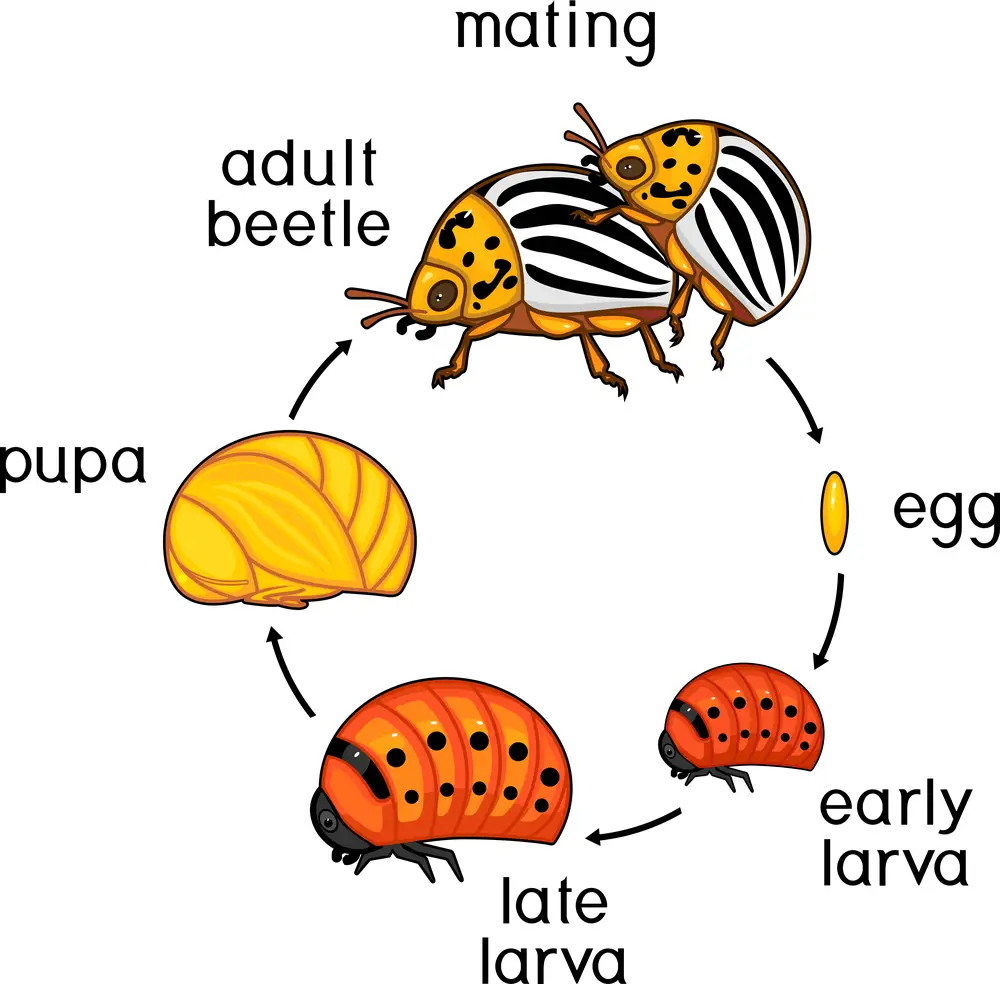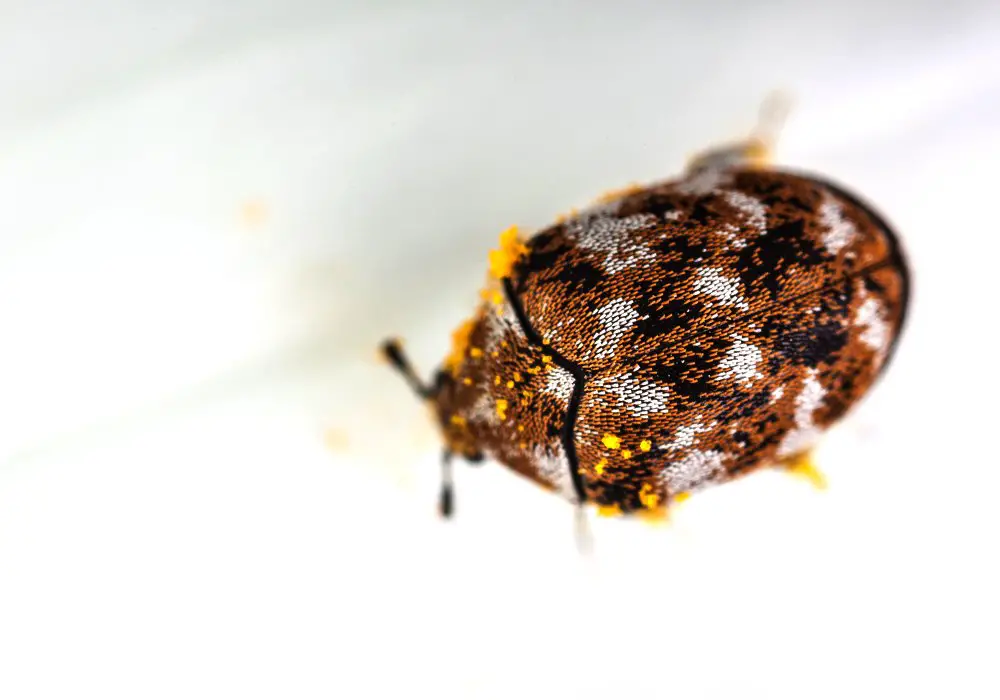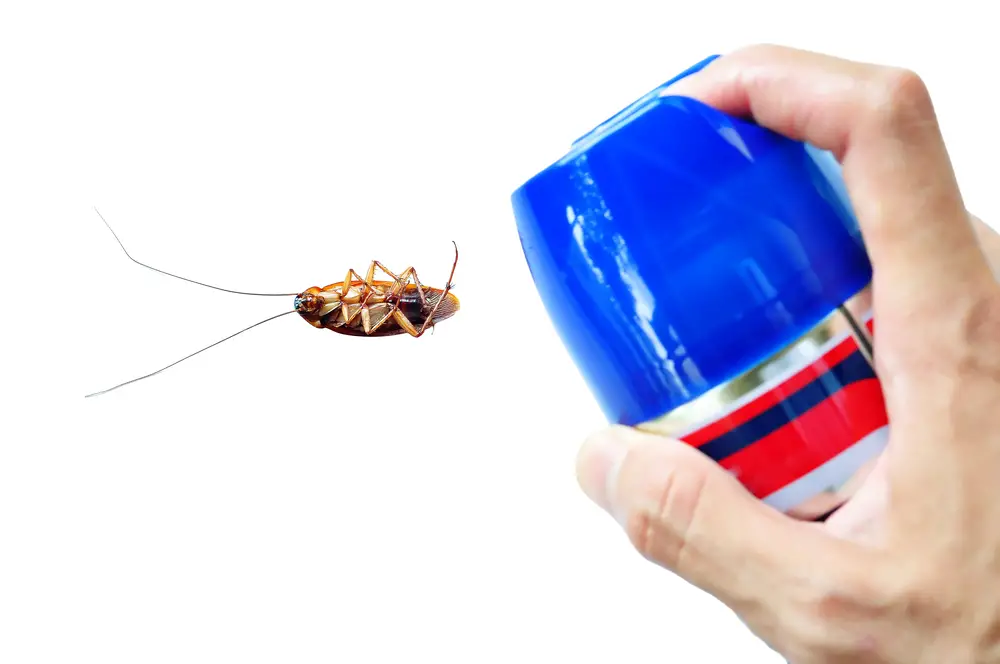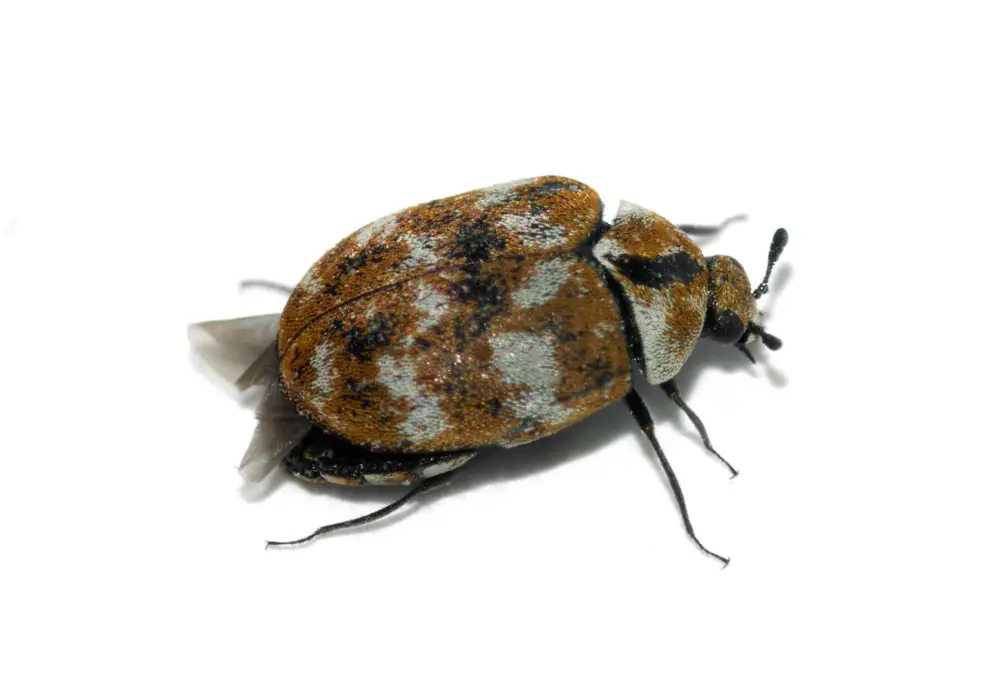Carpet beetles are a common household pest that can cause damage to fabrics, carpets, and stored food items. They are small, oval-shaped insects that come in various colors and patterns.
Quick Answer:
Carpet beetles do not burrow into human skin. They feed on animal products and natural fibers, not flesh. However, some people may have allergic reactions to the hairs on larvae, causing a rash or bumps mistaken for bites.
Carpet beetles, in their adult and larval stages, feed primarily on organic materials like wool, silk, feathers, and even dead insects.
However, their diet and habitat do not include human tissue.
Carpet Beetles Vs. Bed Bugs
Carpet beetles and bed bugs can both be unwelcome guests in your home, but they have different characteristics and behaviors. Let’s take a look at the differences between these two pests in order to better understand them.
Carpet Beetles, or dermestid beetles, are small insects that mainly feed on natural fibers, such as wool, silk, and fur. They can also consume pet hair, feathers, and even some synthetic products.
Carpet beetles don’t pose a direct threat to humans, as they don’t bite or transmit diseases. However, their larvae can cause mild to moderate allergies in some people due to the presence of tiny hairs on their bodies. These allergies may cause itching, rashes, or mild respiratory reactions.
Carpet beetles are usually found in carpets, rugs, upholstered furniture, closets, and storage spaces. While they prefer dark and undisturbed areas, they can be spotted during the daytime as they are attracted to light.
On the other hand, bed bugs are parasitic insects that exclusively feed on the blood of humans and other warm-blooded animals. Unlike carpet beetles, bed bugs can cause physical discomfort and psychological distress due to their biting habits. Bed bug bites result in itchiness, redness, and swelling on the skin.
Bed bugs are commonly found in mattresses, box springs, bed frames, headboards, and nearby cracks and crevices. They typically hide during the day and come out at night to feed. Bed bugs are also known to spread from one location to another by hitching rides on clothing, luggage, and furniture.
When it comes to prevention and treatment, both carpet beetles and bed bugs require different approaches. For carpet beetles, regular vacuuming and cleaning can significantly reduce their population.
If the infestation is severe, professional intervention may be required. In the case of bed bugs, thorough inspection and treatment by pest control professionals are essential for successful eradication, as they can be extremely difficult to eliminate without expertise.
Carpet Beetle Lifecycle

Eggs
Carpet beetles typically lay their eggs in the springtime. A female beetle can lay up to 100 eggs, which are small, oval, and white-yellowish in color. These eggs are often hidden in dark, secluded areas such as behind baseboards, in closets, or within cracks in flooring.
The eggs hatch within one to two weeks, depending on the temperature and humidity of the environment.
Larvae
Once the eggs hatch, the carpet beetle larvae emerge. They are small, hairy, and brownish in color with elongated bodies. The larvae stage is the most destructive phase of their lifecycle, as they feed on a variety of materials, including upholstered furniture, carpets, and clothing.
Carpet beetle larvae prefer to feed on organic material, particularly those containing keratin, such as hair, feathers, and dead skin cells. Their feeding habits may cause significant damage to their surroundings, especially if an infestation is left unchecked.
The larvae stage can last anywhere from one month to two years, depending on the availability of food and environmental conditions.
As the larvae continue to feed and grow, they will shed their exoskeleton multiple times, which may contribute to the telltale signs of an infestation.
Adults
After the carpet beetle larvae have completed their growth and development, they will transform into pupae and, eventually, adult carpet beetles. Adult carpet beetles are oval-shaped and can range in color from black to a mix of brown, white, and orange.
Unlike their larvae counterparts, adult carpet beetles primarily feed on pollen and nectar from flowers. They do not cause damage to household items and are often seen near windows or outside on plants.
The lifespan of an adult carpet beetle ranges from one to two months, during which time they mate and lay eggs, starting the lifecycle process anew.
Infestation in Homes

Carpet beetles are a common pest found in homes. They are attracted to a variety of materials, including carpets, furniture, and fabrics. The larvae of carpet beetles are known to feed on natural fibers such as wool, silk, and leather, causing damage to clothing and furnishings.
A carpet beetle infestation can often start in areas where there are baseboards and windows. Their tiny size allows them to easily enter through cracks and crevices.
Once inside, they look for suitable sources of food and shelter, often hiding between baseboards, under furniture, or in corners, where they can lay their eggs and continue their life cycle.
To control and prevent carpet beetle infestations in your home, it is important to maintain a clean and clutter-free environment. Regular vacuuming and dusting help in removing the carpet beetle larvae, as well as their food sources like pet hair, lint, and dead insects.
Also, inspect your furniture, carpets, and other fabric materials for any signs of damage or larvae, as early detection can prevent larger infestations.
For particularly stubborn infestations, a professional exterminator might be required to thoroughly treat the affected area with insecticides, which can help eradicate the carpet beetle populations.
Efforts to seal gaps and cracks in windows and baseboards can also help prevent future infestations, ensuring that your home remains carpet beetle-free.
Damage Caused by Carpet Beetles
Carpet beetles are common household pests that can cause significant damage to various materials within a home. As their name suggests, they often target carpets, but they do not limit themselves to this type of flooring.
Carpet beetles also wreak havoc on clothes, furniture, and other items made of natural fibers such as wool, fur, silk, and cotton.
Carpet beetle larvae are the primary culprits behind the destruction. They crave the protein keratin, which is found in many organic materials, leading them to consume anything within their reach.
Holes in clothes and carpets are the most visible and immediate consequence of a carpet beetle infestation. It’s not uncommon for homeowners to discover garments or fabrics displaying small, irregularly-shaped holes that indicate the presence of these insects.
Furniture might also suffer extensive damage due to carpet beetle larvae. These pests can chew through the upholstery stuffing, compromising the furniture’s integrity and aesthetic appeal.
If left unchecked, a carpet beetle infestation can lead to expensive repairs and replacements for damaged items.
Natural fibers are particularly at risk, as carpet beetle larvae have a preference for organic materials. Wool, fur, silk, and cotton become prime targets, regardless of whether they are found in clothing, upholstery, or other household objects.
Synthetic fibers, on the other hand, are typically less appealing to carpet beetles. However, a mix of natural and synthetic fibers can still attract the larvae.
Carpet Beetles and Human Skin
Carpet beetles are common household pests that are generally attracted to fabrics and food sources. While these insects do not burrow in human skin, they can cause allergic reactions and rashes in some individuals who have sensitive skin or are prone to allergies.
The reason behind these skin reactions is that carpet beetle larvae possess tiny, sharp hairs on their bodies. When these hairs come into contact with human skin, they can cause irritation and itchiness, which can lead to a rash.
This reaction may resemble insect bites, but carpet beetles do not actually bite humans.
In some cases, the rash may develop into small red bumps or welts, which could be mistaken for bites from other insects. These symptoms may last for a few days or even weeks, depending on the individual’s sensitivity and exposure to the beetles.
To prevent carpet beetles from causing skin issues, it is essential to maintain proper hygiene, vacuum and clean the home regularly, and promptly treat any infestations.
In case of an allergic reaction or rash caused by contact with carpet beetle larvae, the following steps can help alleviate the symptoms:
- Wash the affected area with mild soap and water
- Apply over-the-counter hydrocortisone cream or calamine lotion to reduce itching and inflammation
- Avoid scratching the affected area, as this could lead to infection
- If symptoms persist or worsen, consult a healthcare professional for further treatment options.
Health Risks and Allergic Reactions
Carpet beetles themselves do not burrow into human skin, but they can cause several health issues and allergic reactions. Contact with carpet beetles, their larval hairs, or shed skin can lead to itching, watery eyes, and itchy skin, making it important to manage any infestations promptly.
The most common health concerns associated with carpet beetles are dermatitis and itchiness. Dermatitis is an inflammation of the skin that can cause a burning sensation and red, itchy, or scaly patches.
These reactions can often be mistaken for other insect bites or skin conditions, making it essential to consult a medical professional.
Preventing infections is crucial, as scratching the affected areas can lead to broken skin and introduce pathogens, potentially leading to bacterial or fungal infections. Proper hygiene and over-the-counter treatments such as antihistamines or topical corticosteroids can provide relief and help in managing the symptoms.
It’s important to note that not everyone will experience allergic reactions to carpet beetles, with some individuals being relatively unaffected. However, as a precaution, it is wise to promptly address any potential infestations and seek professional assistance if needed.
Getting Rid of Carpet Beetle Infestations

Carpet beetles are common household pests that may invade your home and cause damage to carpets, clothing, and other fabric items. Contrary to some beliefs, carpet beetles do not burrow into human skin.
However, it is essential to take steps to eliminate carpet beetle infestations for the sake of your belongings and the overall cleanliness of your home.
Regular cleaning is the most effective way to prevent and control carpet beetle infestations. This includes vacuuming your carpets, floors, and furniture, as well as laundering your bedding and clothing.
Be sure to pay special attention to areas where carpet beetles may hide, such as under furniture, in closets, and along baseboards.
Another critical area where carpet beetles may reside is windowsills. Inspect and clean your windowsills regularly to remove any debris, dead insects, and other materials that may attract carpet beetles. Additionally, consider sealing any gaps or cracks around your windows to prevent these pests from entering your home.
In some cases, a professional exterminator may be necessary to eliminate a carpet beetle infestation. An exterminator can assess the severity of the infestation, identify the specific species of carpet beetles present, and determine the best course of action to eradicate them.
Moreover, they have access to effective and safe pesticidal treatments not available to the average consumer.
When dealing with a carpet beetle infestation, you may also want to use a spray specifically designed for these pests.
Select a product with active ingredients that target carpet beetles and adhere to the instructions for proper application. Always exercise caution when using any chemical treatment, and keep them away from children and pets.
Preventing Carpet Beetle Infestations
To prevent carpet beetle infestations, maintaining a clean environment is essential. Regularly vacuuming carpets, rugs, and upholstery can effectively remove carpet beetle larvae and their food sources.
Washing linens and clothing in hot water helps to eliminate eggs and larvae while also removing any traces of skin cells and hair that the beetles are attracted to.
To protect fabrics and stored items from potential infestations, it is recommended to store them in airtight containers. This way, carpet beetles have no access to the fibers and organic materials they feed on.
If you suspect that some stored items may already be infested, placing mothballs in the containers can provide an additional layer of protection, as they act as a repellent to carpet beetles and other pests.
Another important preventive measure is to install screens on windows and doors. This ensures that adult carpet beetles cannot enter your home, preventing their ability to lay eggs and establish an infestation.
Regularly checking for and sealing gaps in the building’s structure can also help to keep carpet beetles out.
Carpet Beetle Management

Carpet beetles can infest various materials in your home, such as leather, linen, and synthetic fibers. To effectively manage a carpet beetle infestation, it is essential to take a comprehensive approach that includes prevention, sanitation, and treatment.
First, prevent carpet beetles by maintaining a clean environment. Regular vacuuming, especially in areas that are prone to beetles, can help remove food sources and larvae.
Make sure to vacuum under furniture, along baseboards, and in closets. Laundering linens, upholstered furniture, and clothes on a regular basis is also crucial.
Because carpet beetles can feed on a wide range of materials, it’s essential to store items made of leather, linen, and synthetic fibers properly. Consider using storage containers with tight-fitting lids or vacuum-sealed bags to keep these items safe and inaccessible to beetles.
Insecticides can be an effective tool for managing carpet beetle populations. Use only approved insecticides for carpet beetles and follow the manufacturer’s instructions carefully. Apply the insecticide to infested areas such as the edges of carpets, baseboards, and cracks or crevices where beetles may be hiding.
Boric acid can also help control carpet beetles. This natural compound works as a desiccant, dehydrating the insects and ultimately causing their death. Lightly dust boric acid in affected areas, taking care not to create large piles of powder, as this can be hazardous to pets and humans.
- Roach killing powder: Kills cockroaches, ants, silverfish, palmetto bugs and waterbugs.
- With boric acid: Using the easy applicator, create a barrier of powder through which cockroaches and other insects must crawl.
- Where to use: Apply the powder under and behind the refrigerator, stove, sink, dishwasher, washing machine, dryer and tubs in kitchen and utility rooms.
Remember to keep boric acid away from children and pets and wear gloves and a mask when applying it.
Professional Fumigation for Carpet Beetles
Professional fumigation is a highly effective method for eliminating carpet beetles from your home. It involves utilizing specialized chemicals and equipment to create an environment that is uninhabitable for these pests.
This process is best conducted by a licensed pest control expert who has the training and expertise to ensure the job is done thoroughly and safely.
The chemicals used in professional fumigation target both adult carpet beetles and their larvae, providing a comprehensive solution to the infestation. Typically, a combination of pesticides is applied, such as pyrethroids, which are effective in controlling adult beetles, and growth regulators, which help prevent the development of larvae.
However, it’s crucial to note that these chemicals may pose risks to humans and pets, so it’s essential to follow all safety guidelines and instructions provided by the professional fumigator.
Steam cleaning can complement professional fumigation in addressing a carpet beetle infestation. High-temperature steam effectively kills carpet beetles at all stages of their life cycle, from eggs to adults.
Steam cleaning ensures deep penetration into the fibers of carpets, rugs, and upholstery, providing an additional layer of defense against these persistent pests.



